Introducing the enchanting world of the purple flower vines , a botanical marvel that graces gardens with its vibrant hues and delicate allure. This captivating plant, distinguished by its rich purple blossoms, weaves a tapestry of color and elegance wherever it takes root. As the sunlight dances upon its petals, the purple flower vine stands as a testament to nature’s artistry, inviting admiration from all who encounter its breathtaking beauty. Join us on a journey to explore the nuances of this exquisite flora, as we unravel the secrets behind the charm of the purple flower vine, a true gem in the floral kingdom.
Purple Flower Vines-Passion

Purple Flowering Passion Vines, also known as purple flower vines, are exquisite climbing plants renowned for their vibrant blooms and ornamental appeal. These vines belong to the Passifloraceae family and are characterized by their stunning purple flowers, which add a touch of elegance to gardens and landscapes.
These vines are particularly favored for their fast growth and ability to cover structures such as trellises, fences, and arbors, creating a visually striking display. The purple flowers, with their intricate design, serve as a magnet for pollinators like butterflies and bees, contributing to the overall biodiversity of the area.
Purple Flowering Passion Vines are relatively easy to cultivate, requiring well-drained soil and a sunny location for optimal growth. Regular watering and occasional fertilization help promote healthy foliage and prolific blooming throughout the growing season.
Garden enthusiasts appreciate the low maintenance nature of these vines, making them an excellent choice for both experienced and novice gardeners. With their resilience and adaptability, purple flower vines can thrive in various climates, adding a burst of color to outdoor spaces.
Purple Clematis Vine
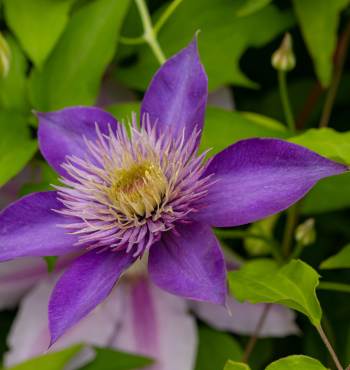
The Purple Clematis Vine, known for its enchanting purple flowers, is a stunning addition to any garden. This climbing plant belongs to the Ranunculaceae family and is renowned for its vibrant and eye-catching blooms.
Characterized by deep purple petals that gracefully unfurl, this vine adds a pop of color to fences, trellises, and arbors. The Purple Clematis Vine is a hardy and fast-growing perennial, making it a favorite among garden enthusiasts.
Thriving in well-drained soil and partial to full sunlight, this vine is relatively low-maintenance. Regular watering and occasional pruning will encourage a lush and abundant display of its captivating purple blossoms throughout the blooming season.
Gardeners appreciate the versatility of the Purple Clematis Vine, as it can be used to cover unsightly structures or create a natural privacy screen. Its resilience and adaptability make it suitable for various climates, making it a popular choice for landscaping projects.
Purple Vining Roses
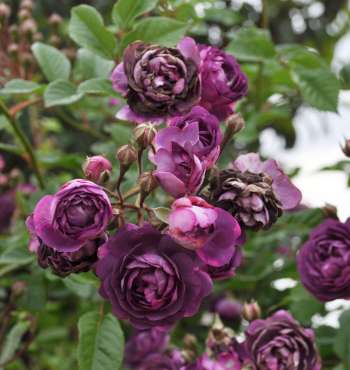
Purple Vining Roses are exquisite flowering plants that add a touch of elegance to any garden or landscape. These roses, known for their stunning purple hue, belong to the climbing or vining variety, making them a unique and visually appealing choice for garden enthusiasts.
The purple flower vine is characterized by its vigorous climbing habit, gracefully adorning arbors, fences, and trellises with its vibrant blooms. These roses boast a rich, regal purple color that stands out among other garden flowers, creating a captivating focal point.
One of the advantages of cultivating purple vining roses is their ability to add vertical interest to outdoor spaces. As these vines grow and intertwine, they form a lush and enchanting display, transforming your garden into a picturesque haven.
Gardeners appreciate the resilience of purple vining roses, as they are generally hardy and adaptable to various climates. With proper care, these roses can thrive and bloom profusely, rewarding garden enthusiasts with a continuous display of charming purple flowers.
Whether you’re looking to enhance your garden’s aesthetics or create a romantic atmosphere, purple vining roses are an excellent choice. Their alluring color and climbing nature make them a versatile and enchanting addition to any outdoor space, bringing beauty and sophistication to your floral landscape.
Purple Hyacinth Bean Vine
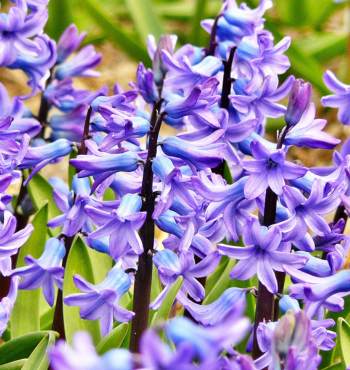
The Purple Hyacinth Bean Vine, commonly known as the purple flower vine, is a charming and vibrant ornamental plant that adds a burst of color to gardens and landscapes. This fast-growing vine is characterized by its heart-shaped leaves and stunning clusters of deep purple flowers, making it a favorite among garden enthusiasts.
Thriving in warm climates, the purple flower vine is easy to cultivate and adapts well to various soil types. It climbs and twines, creating an enchanting display as it gracefully covers trellises, fences, and arbors. Its rapid growth and ability to provide ample shade make it an excellent choice for enhancing outdoor spaces.
Aside from its aesthetic appeal, the Purple Hyacinth Bean Vine also boasts nitrogen-fixing properties, promoting soil health. Its lush foliage serves as an attractive backdrop to showcase the vivid purple blossoms, creating a picturesque setting in gardens and landscapes.
This resilient vine is known for its low maintenance requirements, making it an ideal choice for both novice and experienced gardeners. Whether you’re looking to beautify your garden or create a natural privacy screen, the purple flower vine is a versatile and delightful addition to any outdoor space.
Blue Sky Vine
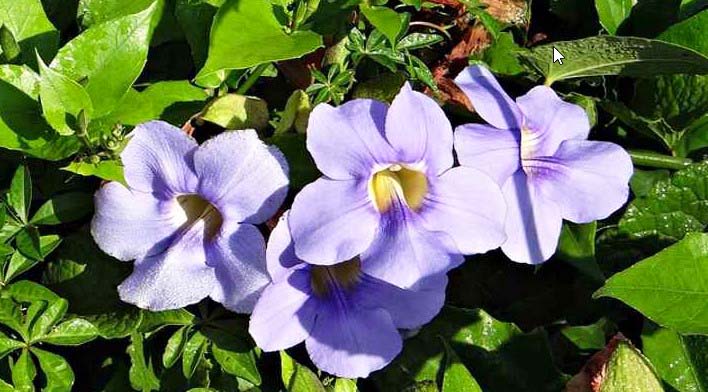
Blue Sky Vine, also known as the purple flower vine, is a stunning and fast-growing climber that adds a touch of elegance to gardens. With its vibrant purple flowers, this vine, scientifically named Thunbergia grandiflora, is a favorite among garden enthusiasts.
Characterized by heart-shaped leaves and trumpet-shaped blossoms, the Blue Sky Vine creates a captivating display as it gracefully climbs fences, trellises, or arbors. Its rapid growth makes it an ideal choice for quickly covering unsightly structures or creating a natural green screen.
Thriving in warm climates, this purple flower vine is relatively low-maintenance, requiring well-drained soil and occasional pruning to keep its exuberant growth in check. It attracts butterflies and hummingbirds, contributing to a lively and dynamic garden ecosystem.
Whether adorning your outdoor space with its radiant blooms or providing shade with its lush foliage, the Blue Sky Vine is a delightful addition that effortlessly enhances the beauty of any garden.
Purple Flowering Lavender Trumpet Vine
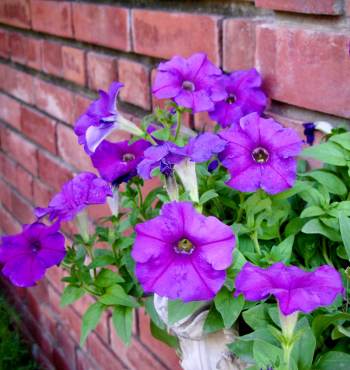
The Purple Flowering Lavender Trumpet Vine, commonly known as the purple flower vine, is a captivating ornamental plant. With its vibrant purple blooms, this vine adds a touch of elegance to gardens and landscapes. The trumpet-shaped flowers boast a rich lavender hue, creating a stunning visual display.
This hardy vine is renowned for its vigorous growth and ability to thrive in various climates. Its lush foliage, coupled with the striking purple flowers, makes it a favorite among garden enthusiasts. The plant is adaptable and can be cultivated in both containers and garden beds.
The Purple Flowering Lavender Trumpet Vine is not only visually appealing but also attracts pollinators like butterflies and hummingbirds. Its trumpet-shaped blossoms serve as a nectar source, contributing to the overall biodiversity of the garden.
Gardeners appreciate the low-maintenance nature of this vine, making it an excellent choice for those seeking a beautiful yet easy-to-care-for plant. Whether cascading down a trellis or climbing a support structure, the purple flower vine adds a pop of color and natural beauty to any outdoor space.
Purple Bougainvillea Vine
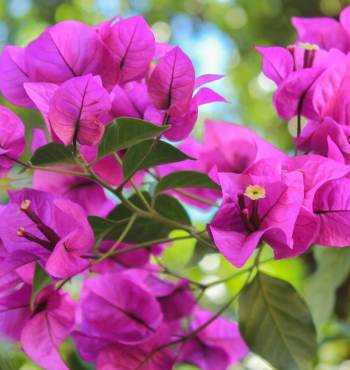
The Purple Bougainvillea Vine is a stunning and vibrant flowering plant that belongs to the family Nyctaginaceae. Known for its striking purple flowers, this vine adds a burst of color to gardens and landscapes. With its vigorous growth and climbing nature, the purple flower vine is an excellent choice for trellises, arbors, and fences.
This ornamental plant thrives in warm climates and requires well-draining soil and ample sunlight for optimal growth. The purple bougainvillea vine is relatively low-maintenance, making it a popular choice among gardeners looking to enhance the visual appeal of their outdoor spaces.
Characterized by its papery bracts that surround inconspicuous flowers, the purple bougainvillea vine creates a mesmerizing display when in full bloom. These bracts come in various shades of purple, ranging from deep violet to magenta, creating a captivating and eye-catching spectacle.
Blue Morning Glory
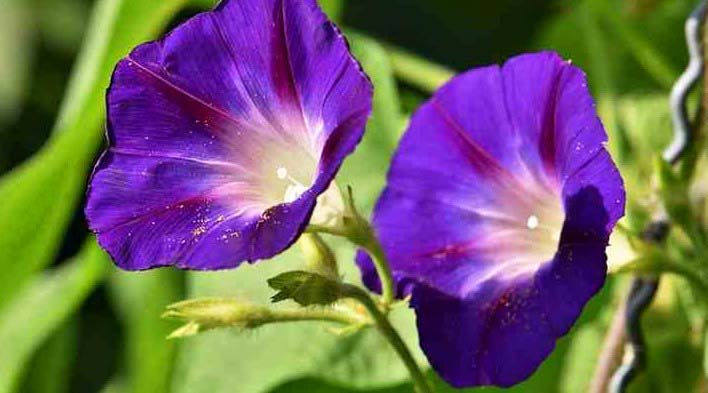
Blue Morning Glory, a captivating purple flower vine, is a stunning ornamental plant known for its vibrant blossoms. This climbing vine, scientifically named Ipomoea tricolor, features large, trumpet-shaped flowers in varying shades of blue. With heart-shaped leaves, this fast-growing plant adds a touch of elegance to gardens and trellises. Its prolific blooms open in the morning, creating a striking display that lasts throughout the summer. Blue Morning Glory is easy to cultivate, making it a popular choice for gardeners seeking a low-maintenance yet visually rewarding addition to their landscapes.
Mandevilla Vine with Purple Flowers
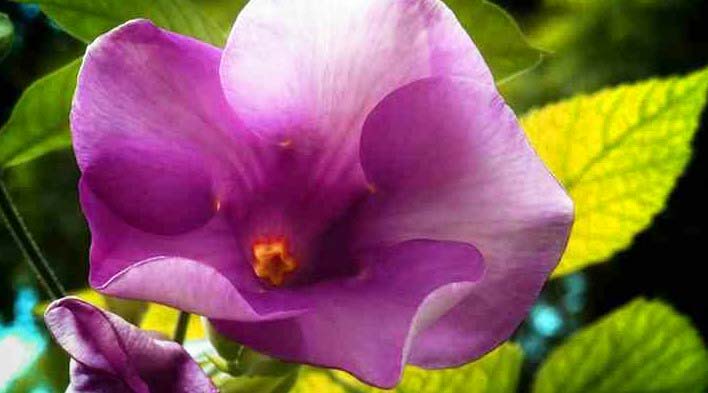
The Mandevilla vine with purple flowers is a stunning addition to any garden. This vigorous and fast-growing purple flower vine is renowned for its vibrant and eye-catching blossoms. The trumpet-shaped flowers boast a rich, deep purple hue that adds a touch of elegance and charm to outdoor spaces.
Ideal for trellises, fences, or pergolas, the Mandevilla vine with purple flowers creates a lush and enchanting display. Its glossy green foliage provides a striking contrast to the vivid purple blooms, enhancing the overall visual appeal. This hardy vine is relatively low-maintenance, thriving in well-drained soil and full sunlight.
During the growing season, the Mandevilla vine produces an abundance of purple flowers, creating a picturesque spectacle that attracts pollinators like butterflies and hummingbirds. With proper care, this purple flower vine can bloom prolifically, transforming any garden into a colorful haven. Considered a symbol of grace and beauty, the Mandevilla vine with purple flowers is a delightful choice for both novice and experienced gardeners seeking a touch of sophistication in their outdoor landscapes.
Japanese Honeysuckle
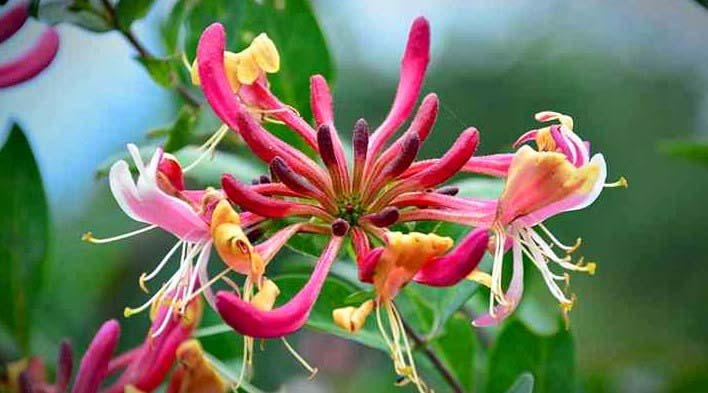
Japanese Honeysuckle, recognized for its vibrant and fragrant purple flower vine, is a versatile and fast-growing plant native to East Asia. With its scientific name Lonicera japonica, this ornamental vine is commonly cultivated for its aesthetic appeal and sweet scent.
The purple flowers of the Japanese Honeysuckle are small, tubular, and arranged in clusters along the stems, creating a visually striking display. This climbing plant is renowned for its ability to cover fences, trellises, and arbors, adding a touch of elegance to gardens and landscapes.
Thriving in various soil types and sun conditions, Japanese Honeysuckle is known for its resilience and adaptability. Its rapid growth rate makes it an ideal choice for creating natural boundaries and providing privacy in outdoor spaces.
Gardeners appreciate Japanese Honeysuckle not only for its beauty but also for its low maintenance requirements. Regular pruning helps control its exuberant growth and encourages more prolific flowering.
Beyond its visual appeal, this vine serves as a valuable resource for pollinators, attracting bees and butterflies with its abundant nectar. The fragrant blooms, opening in late spring to early summer, make it a delightful addition to any garden.
However, it’s important to note that Japanese Honeysuckle can be invasive in some regions, outcompeting native plants. Therefore, it’s advisable to check local guidelines and consider alternatives if there’s a risk of ecological disruption.
Climbing Nasturtium
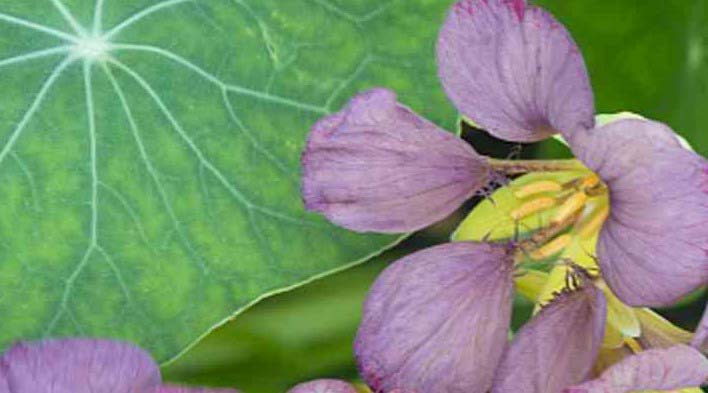
Climbing Nasturtium, a vibrant and versatile plant, is renowned for its captivating beauty and unique characteristics. This purple flower vine, with its heart-shaped leaves, belongs to the Tropaeolum genus and is a favorite among gardeners for its easy cultivation and stunning appearance.
The climbing nasturtium is distinguished by its cascading vines, adorned with clusters of striking purple flowers. These blossoms add a pop of color to any garden or trellis, creating an enchanting display. The plant’s ability to climb and spread makes it an excellent choice for vertical gardening, allowing it to cover fences, walls, or arbors with its lush foliage and vibrant blooms.
Known for its adaptability, climbing nasturtium thrives in various soil types and is relatively low-maintenance. It is a hardy annual that can withstand different climates, making it suitable for both novice and experienced gardeners. Its rapid growth and resilience make it a popular choice for those looking to add a touch of elegance to their outdoor spaces without extensive care requirements.
Boston Ivy

Boston Ivy, a captivating purple flower vine, is a deciduous climbing plant known for its ornamental appeal. With heart-shaped leaves that turn vibrant shades of red in autumn, this resilient vine adds a touch of elegance to buildings and walls. Native to East Asia, Boston Ivy is widely cultivated for its ability to thrive in various climates and soil conditions. Its rapid growth and adhesive tendrils make it an ideal choice for covering unsightly structures. Gardeners appreciate its low maintenance requirements and the stunning display of small, inconspicuous purple flowers that bloom in late spring. Whether adorning fences, trellises, or facades, Boston Ivy’s aesthetic charm and adaptability make it a popular choice for both novice and experienced gardeners alike.
Sweet Pea

Sweet Pea is a charming purple flower vine known for its delicate beauty and sweet fragrance. This climbing plant, scientifically named Lathyrus odoratus, belongs to the legume family. With its vibrant purple blossoms, Sweet Pea adds a burst of color to gardens and trellises. The flowers feature a distinctive shape and are often used in floral arrangements for their alluring scent. Easy to cultivate, this vine thrives in well-drained soil and prefers full sunlight. Gardening enthusiasts appreciate Sweet Pea for its versatility and ability to enhance outdoor spaces with its enchanting presence.
Climbing Fuchsia
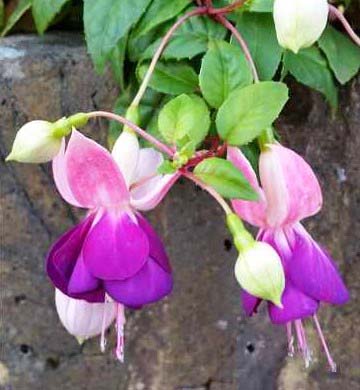
Climbing Fuchsia, also known as the purple flower vine, is a stunning and vibrant plant that adds a splash of color to gardens and landscapes. With its cascading branches and pendulous tubular flowers, Climbing Fuchsia is a favorite choice for those seeking an eye-catching and graceful addition to their outdoor spaces.
This ornamental vine features lush green foliage that serves as a perfect backdrop to the striking purple flowers, creating a visually appealing contrast. The flowers, characterized by their distinctive tubular shape, attract pollinators like hummingbirds and butterflies, enhancing the overall biodiversity of the garden.
Climbing Fuchsia is known for its versatility, thriving in various climates and soil conditions. Its climbing nature makes it an ideal choice for trellises, fences, or arbors, allowing gardeners to showcase its beauty in vertical spaces. Regular pruning helps maintain its shape and encourages more prolific blooming.
Whether adorning a pergola or climbing up a wall, this purple flower vine adds a touch of elegance and charm to any outdoor setting. With minimal care requirements, Climbing Fuchsia is a low-maintenance yet rewarding choice for both novice and experienced gardeners, providing a burst of color and natural beauty to any garden landscape.
Butterfly Pea
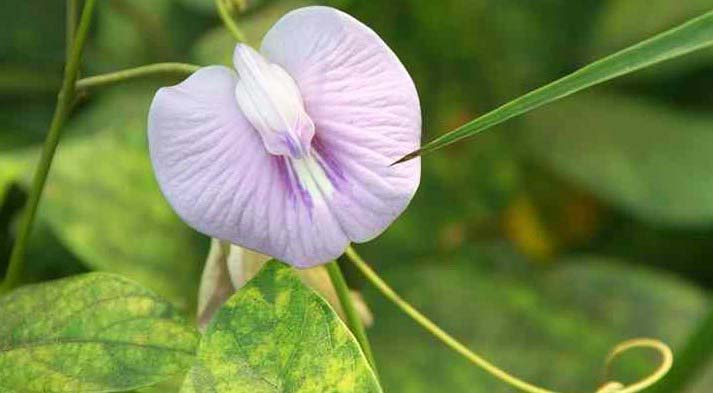
The Butterfly Pea, also known as Clitoria ternatea, is a captivating purple flower vine that belongs to the Fabaceae family. This unique plant is renowned for its striking, vibrant blossoms, which showcase a deep shade of blue-purple. Native to Southeast Asia, the Butterfly Pea has gained popularity not only for its ornamental value but also for its various culinary and medicinal uses.
In addition to its eye-catching appearance, the Butterfly Pea is admired for its versatility. The plant is often cultivated for its vivid petals, which are utilized to naturally dye food and beverages. The vibrant blue hue extracted from the petals is commonly employed in traditional dishes, teas, and cocktails, adding both color and a mild earthy flavor.
Beyond its culinary applications, the Butterfly Pea is recognized for its potential health benefits. Rich in antioxidants, the flower is believed to possess anti-inflammatory and cognitive-enhancing properties. In traditional medicine, infusions made from Butterfly Pea flowers have been used to promote relaxation and improve overall well-being.
Cultivating this purple flower vine is relatively straightforward, making it a favorite among gardeners and horticulturists. With its climbing nature, the Butterfly Pea can be trained to grow on trellises or fences, creating a stunning display of cascading purple blossoms.
Chocolate Vine
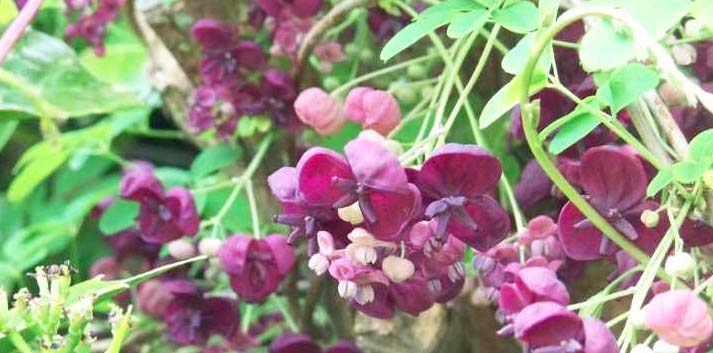
The Chocolate Vine, also known as the purple flower vine, is a charming and fast-growing plant that belongs to the Akebia genus. With its heart-shaped leaves and distinctive, fragrant flowers, this vine is a favorite among garden enthusiasts.
This deciduous climber is renowned for its lush foliage and unique blossoms, which emerge in clusters of deep purple flowers. The blooms possess a sweet, chocolate-like fragrance, giving the vine its delightful name.
Adaptable to various soil types, the Chocolate Vine thrives in well-drained, fertile soil and can tolerate both full sun and partial shade. Its vigorous growth makes it an excellent choice for arbors, fences, and trellises, where it can gracefully climb and cover vertical spaces.
A hardy and low-maintenance plant, the purple flower vine is known for its resilience in different climates. Once established, it requires minimal care, making it an ideal option for gardeners seeking an easy-to-grow, ornamental addition to their landscapes.
Garlic Vine
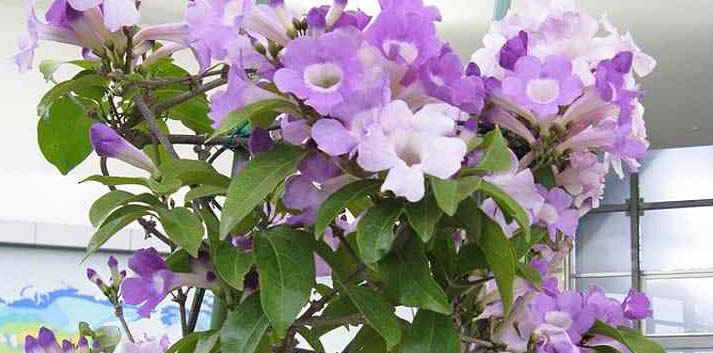
The Garlic Vine, recognized for its vibrant purple flowers, is a charming and resilient plant. Also known as Mansoa alliacea, this tropical climber belongs to the Bignoniaceae family. Native to Central and South America, the Garlic Vine has gained popularity for its ornamental appeal.
Its glossy, dark green leaves serve as an attractive backdrop to the clusters of tubular purple flowers that bloom profusely. The distinct feature of this vine lies in its unique fragrance, reminiscent of garlic, which is more pronounced when the leaves are crushed.
Adaptable and low-maintenance, the Garlic Vine thrives in well-drained soil and enjoys ample sunlight. With its rapid growth, it makes an excellent choice for arbors, trellises, or fences, adding a burst of color to any garden landscape. The vine’s ability to withstand various climatic conditions makes it suitable for both tropical and subtropical regions.
Garden enthusiasts appreciate the Garlic Vine not only for its aesthetics but also for its hardiness. Regular pruning helps maintain its shape and encourages more prolific flowering. Whether adorning a garden or climbing a pergola, the Garlic Vine captivates with its vivid purple blossoms, making it a delightful addition to outdoor spaces.
Bittersweet Nightshade
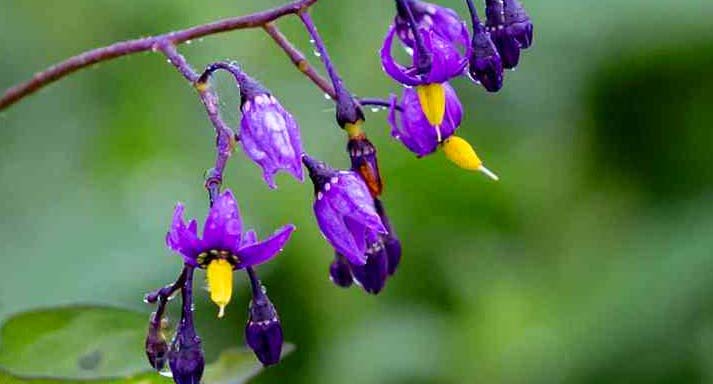
Bittersweet Nightshade, a captivating purple flower vine, is a perennial plant that belongs to the Solanaceae family. With its striking purple blossoms, this vine adds a touch of elegance to gardens and natural landscapes.
This resilient plant, known scientifically as Solanum dulcamara, is native to Europe and Asia but has found its way to various regions across the globe. Its distinctive purple flowers, adorned with yellow centers, create a visually stunning display during the blooming season.
Bittersweet Nightshade is characterized by its twining vines that can climb and sprawl across fences, trees, and other structures. The plant’s leaves are lance-shaped, featuring a glossy green hue that complements the vibrant purple flowers.
Caution is advised when handling Bittersweet Nightshade, as it contains toxic compounds. Despite its alluring appearance, the plant has been historically associated with folklore and cautionary tales due to its poisonous nature.
Chilean Potato Bush
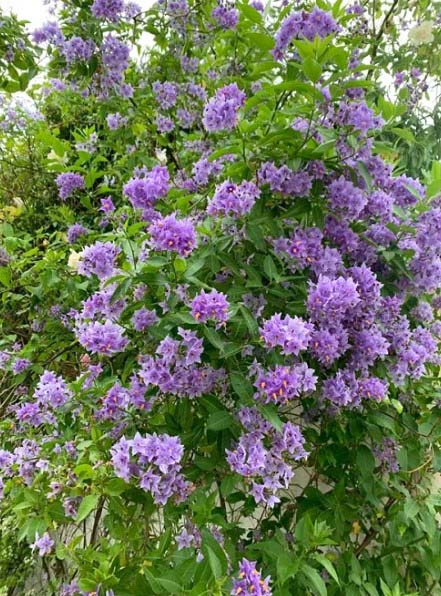
The Chilean Potato Bush, also known as the “purple flower vine,” is a captivating flowering plant native to South America, particularly Chile. This enchanting vine is renowned for its vibrant and eye-catching purple flowers that bloom in clusters, creating a stunning visual display.
With its scientific name Solanum crispum, this hardy vine belongs to the Solanaceae family. Its distinctive purple flowers, which resemble small trumpets, add a splash of color to gardens and landscapes, making it a popular choice among gardeners and horticulturists.
The Chilean Potato Bush is a versatile plant that thrives in various climates, adapting well to both full sunlight and partial shade. It is known for its resilience and ability to withstand different soil conditions, making it relatively low-maintenance.
This purple-flowered vine is not only valued for its aesthetic appeal but also for its ability to attract pollinators like bees and butterflies. The flowers bloom prolifically, creating a visually striking and inviting environment for these beneficial insects.
Gardeners appreciate the Chilean Potato Bush for its climbing nature, making it an excellent choice for trellises, fences, or arbors. Its vigorous growth and cascading habit contribute to its popularity in landscaping projects.
FAQ
What is the name of the vine with purple flowers?
The vine with purple flowers is commonly known as the “Purple Wisteria.”
What is the creeper of purple flowers?
The creeper of purple flowers is a charming plant that adorns gardens with its vibrant hues. Its delicate petals cascade in clusters, creating a stunning visual display. Garden enthusiasts often cultivate this creeper for its beauty and the touch of elegance it adds to outdoor spaces. The purple flowers bloom abundantly, attracting bees and butterflies, contributing to the overall biodiversity of the garden. With its graceful growth pattern, the creeper of purple flowers is a favorite among those seeking to enhance their landscapes with a burst of color and natural allure.
What is the ivy plant with purple flowers?
The ivy plant with purple flowers is commonly known as “Purple Heart” or “Purple Queen” (Tradescantia pallida). This vibrant trailing plant is renowned for its striking deep purple foliage and small, delicate blossoms. It adds a touch of elegance to gardens and hanging baskets, thriving in well-drained soil and partial sunlight. Gardeners appreciate its low-maintenance nature and the ability to cascade gracefully, creating a visually appealing display. The Purple Heart ivy plant is a popular choice for those seeking an effortlessly beautiful and resilient addition to their outdoor spaces.
What is the purple flower that hangs down?
The purple flower that hangs down is called Wisteria. It cascades gracefully with long clusters of fragrant blooms. This ornamental vine adds a touch of elegance to gardens and arbors, swaying gently in the breeze. Wisteria’s distinctive lavender hue and cascading appearance make it a beloved choice for decorative landscaping.
Conclusion
The purple flower vine adds a touch of elegance and vibrancy to any garden or landscape. Its enchanting hues create a visual feast, captivating onlookers with its regal charm. This resilient plant not only beautifies surroundings but also requires minimal care, making it an ideal choice for both seasoned and novice gardeners. With its graceful tendrils and captivating blossoms, the purple flower vine stands as a testament to nature’s artistry. Embracing this botanical wonder brings not only a burst of color but also a sense of tranquility, making it a delightful addition to any outdoor space. In essence, the purple flower vine proves that simplicity can indeed be extraordinary, turning ordinary spaces into a haven of natural splendor.






